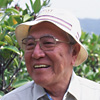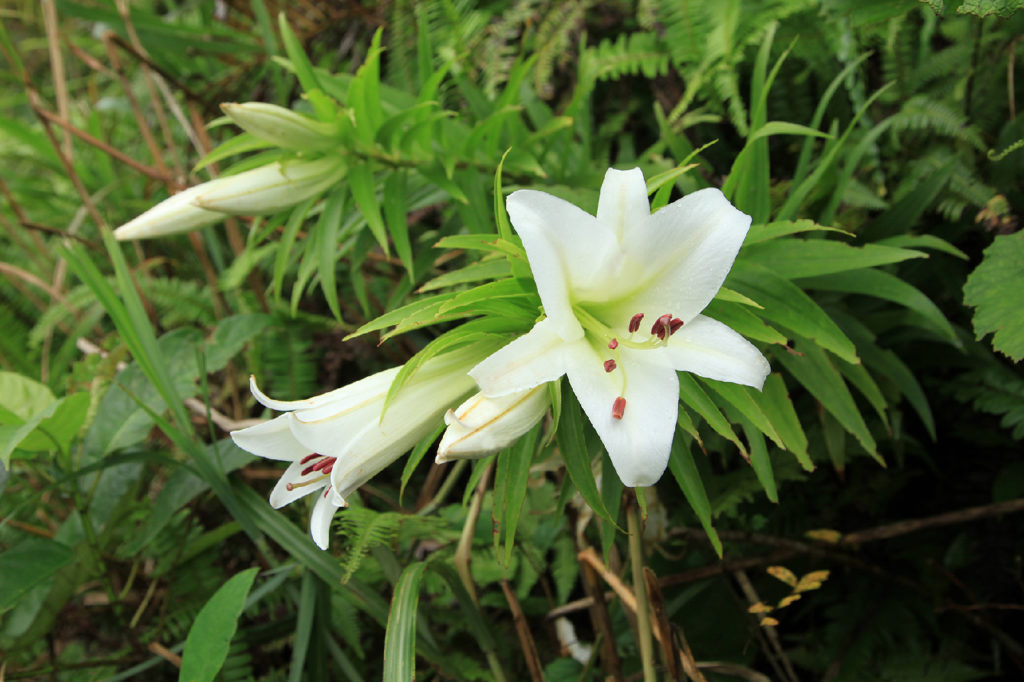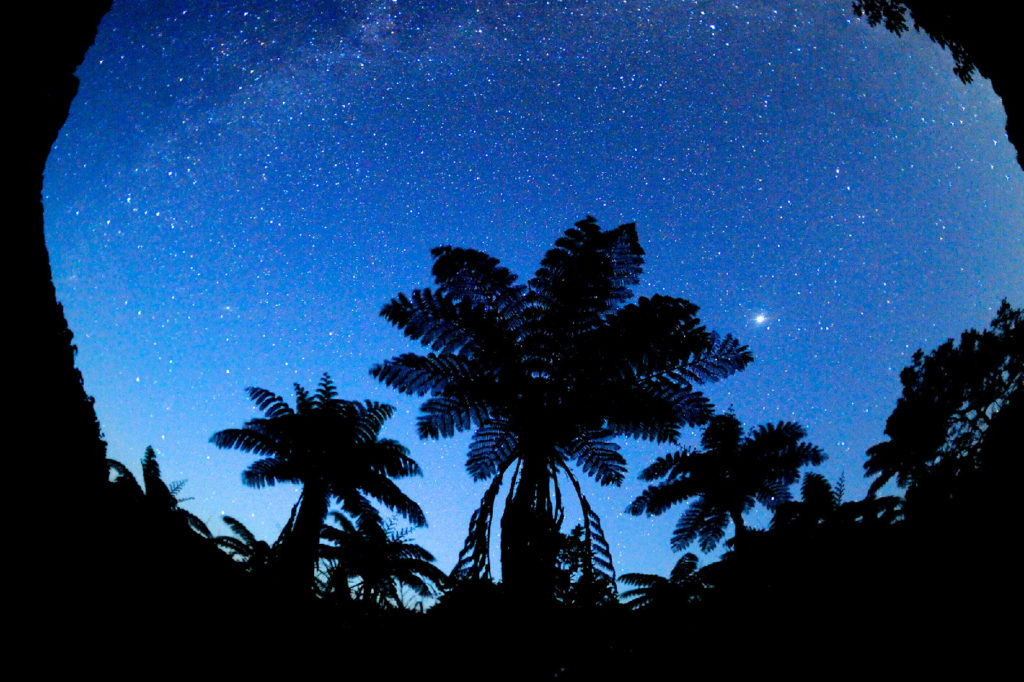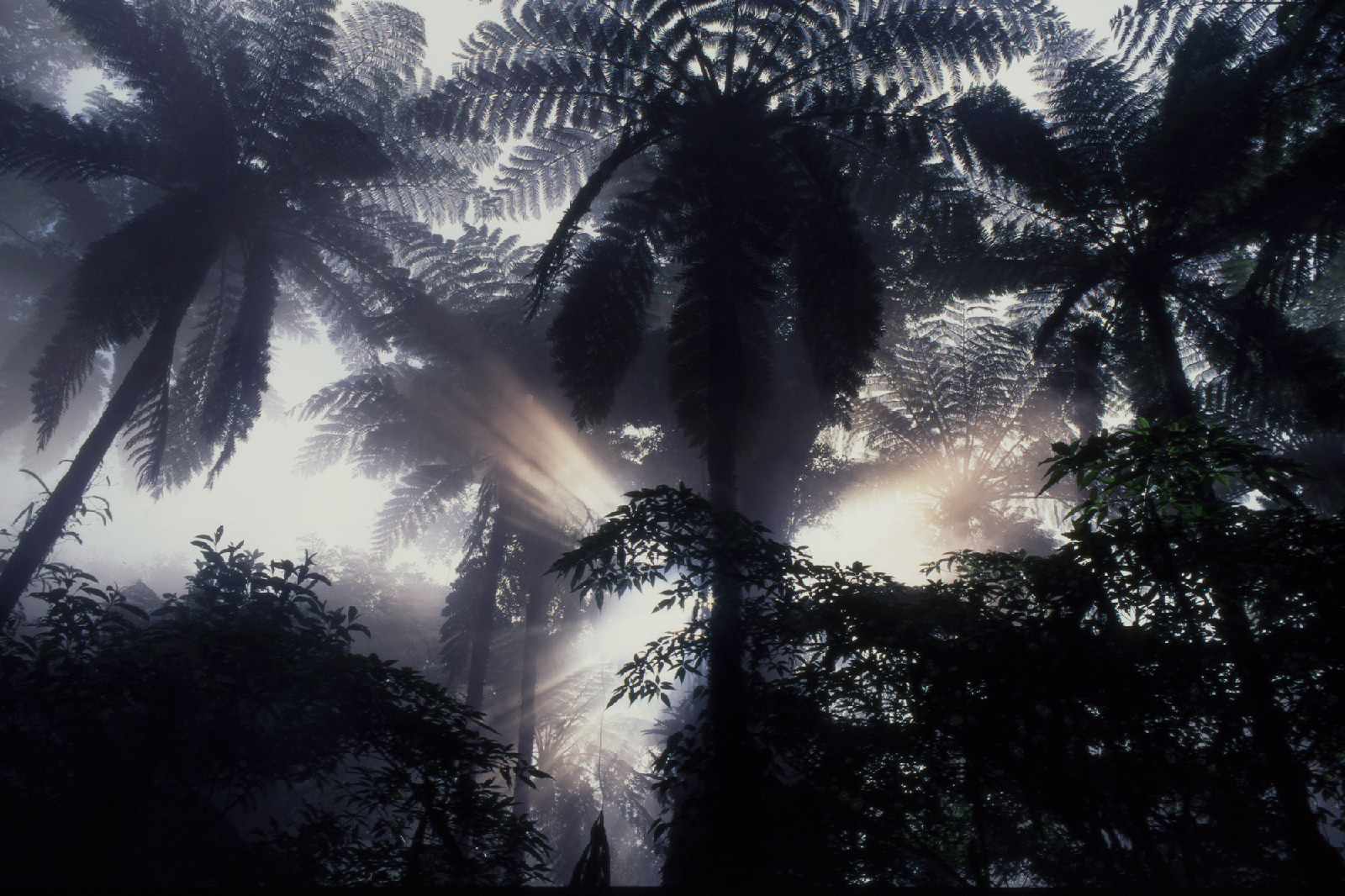
Plants of Forest
Life Lived in Nature (essay)
In 1954, shortly after the Amami Islands reverted to Japan, Yoshio Horikawa of Hiroshima University, who is a pioneer of Japanese plant morphology, arrived with some students in the islands. This visit for the purpose of botanical research was ultimately a significant encounter with the forest of his birthplace. He met Professor Sumihiko Hatsushima, an authority in tropical plant classification in 1955, and a walk through thick Kinsakubaru made a lasting impression. Viola amamiana, Oxalis amamiana and other new species started to be found one after another along the mountain streams of Sumiyo River in 1985. Since such discoveries were extremely unusual in Japan, a country that undertakes botanical research very thoroughly, the news generated great interest.
Hatsushima felt that “together with the Okinawa Islands, Amami Oshima and Tokunoshima were the islands that separated from the Asian continent the earliest. They’re a unique biological zone that deserves more of attention.” This short piece condenses the importance and magnificence of Amami’s nature. May we all attain a better understanding of the rare nature of Amami, because it is essential that we love our nature.
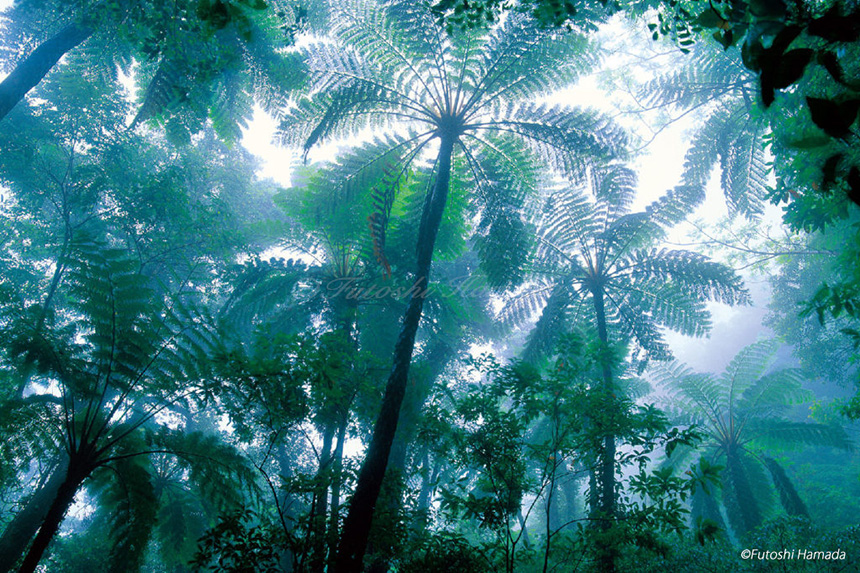
Kinsakubaru (© Futoshi Hamada)
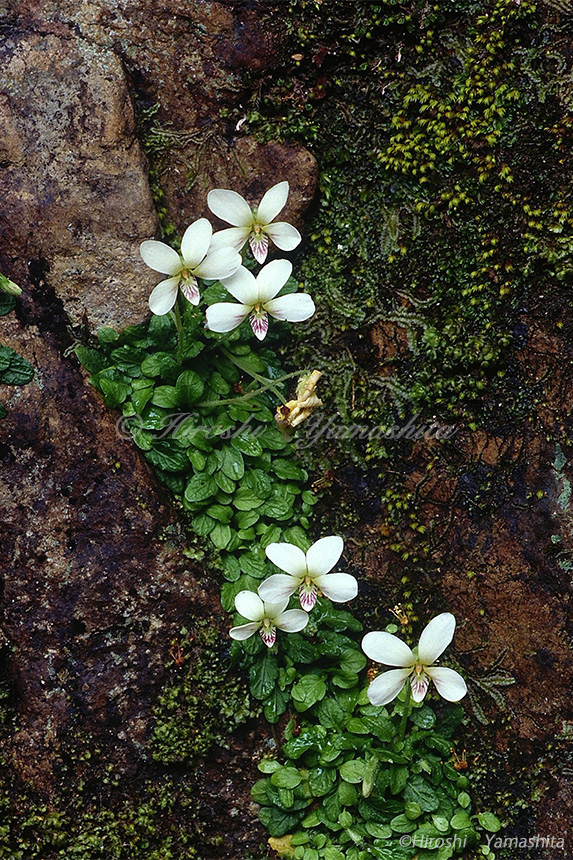
Viola amamiana (© Hiroshi Yamashita)
